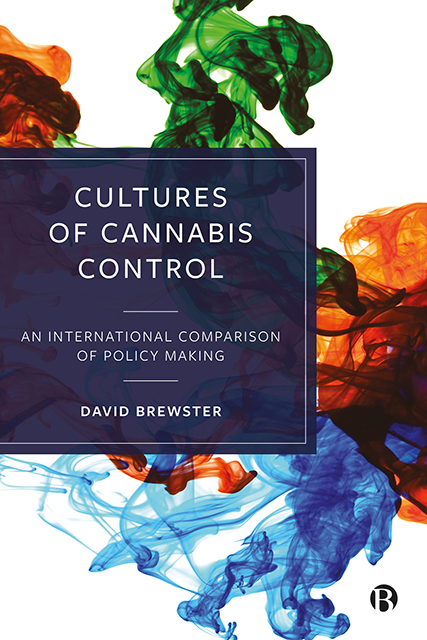Book contents
- Frontmatter
- Contents
- List of Tables
- About the Author
- Acknowledgements
- 1 Introduction
- 2 Cannabis Policy in Global Perspective
- 3 Sociopolitical Change and Cannabis Control
- 4 Problematizing Cannabis
- 5 The ‘Primeval Soup’ of Policy Proposals
- 6 The Political Environment and Windows of Opportunity
- 7 Beyond the National: Policy Negotiation, Resistance and Subversion
- 8 Cultures of Cannabis Control
- 9 Conclusions and Future Directions
- Appendix
- Notes
- References
- Index
1 - Introduction
Published online by Cambridge University Press: 16 June 2023
- Frontmatter
- Contents
- List of Tables
- About the Author
- Acknowledgements
- 1 Introduction
- 2 Cannabis Policy in Global Perspective
- 3 Sociopolitical Change and Cannabis Control
- 4 Problematizing Cannabis
- 5 The ‘Primeval Soup’ of Policy Proposals
- 6 The Political Environment and Windows of Opportunity
- 7 Beyond the National: Policy Negotiation, Resistance and Subversion
- 8 Cultures of Cannabis Control
- 9 Conclusions and Future Directions
- Appendix
- Notes
- References
- Index
Summary
For almost a century, prohibitive regimes have been the dominant mode of cannabis control across the world. Yet despite what one might expect, it cannot be said that policy approaches have been uniform throughout this period, and certainly over the past couple of decades cannabis policy across the globe has become ever more fragmented.
The diversity that can be found is reflective of the differentiated meanings that are attached to the use of cannabis, which are constantly shifting over time and space. For some, it is the source of moral degradation which corrupts the mind and body; it is the cause of developmental, mental health and crime problems; it is the gateway to other drugs, such as cocaine, heroin and methamphetamine; and it is a key driver of organized crime activities and destabilizing conflict. Yet for others, its use is a matter of individual liberty and human rights; it is a source of creativity and means for spiritual enlightenment; it is the cure for an ever-increasing range of ailments; it is a means for economic gain; and it is a valuable resource in agriculture, textiles and manufacturing.
This raises interesting questions about why certain ideas about cannabis and their manifestation in policy have triumphed over others, and what sorts of processes and relations facilitate or hinder the ascension or repression of particular approaches. In thinking about this, it is evidently not the case that cannabis policies are necessarily constituted from logically coherent and consistent dispositional tendencies; rather, it is often the case that multiple, sometimes contradictory, meanings coexist in policy and public discourse, both within the governable space of an individual country and more broadly in the international community. In this regard, for example, it is striking that while at a federal level in the United States there continue to be aggressive criminal justice frameworks and approaches, at the time of writing, 18 states, the District of Columbia and two territories have legalized cannabis for recreational purposes; or that lawmakers in the Philippines – a country in which it is conservatively estimated that 8,663 people were killed between 2016 to 2020 for suspected drug offences – have attempted to introduce more ‘progressive’ legislation than countries such as the United Kingdom in respect of medical cannabis (Punay, 2020; UN High Commissioner for Human Rights, 2020).
- Type
- Chapter
- Information
- Cultures of Cannabis ControlAn International Comparison of Policy Making, pp. 1 - 16Publisher: Bristol University PressPrint publication year: 2022

